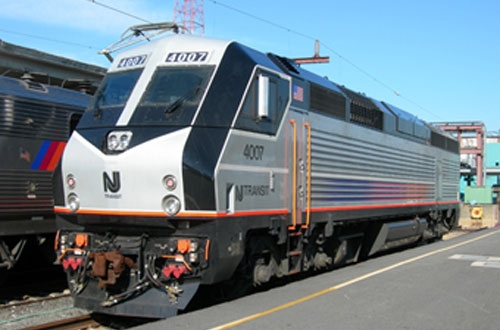New Jersey marks safety month with “E-Cubed” success
Written by Jenifer Nunez, assistant editor
In honor of National Safety Month, New Jersey Department of Transportation (NJDOT) and New Jersey Transit (NJ Transit) have collaborated to promote safety and reduce accidental deaths along the state's railroad tracks.
NJDOT Commissioner and NJ Transit Chairman James Simpson said, “When the Christie Administration embarked on this mission to prevent accidental deaths along New Jersey’s rail network, we collectively committed to pursuing every available avenue through an approach we call ‘E-cubed’—Engineering, Enforcement and Education—which has been a tremendous success. The statistics show that these efforts are working; however, since the statistics represent real people, we will continue to dedicate the efforts that have sprung from this safety initiative to all who have endured tragedy along our railroads in the past and to those we will protect in the future.”
Prior to enactment and implementation of the new “E-Cubed” rail safety tactics, a total of 44 accidental fatalities involving NJ Transit trains were recorded from 2008 to 2011, as follows: eight in 2008, 13 in 2009, 14 in 2010 and 9 in 2011.
Since January of 2012, three accidental fatalities (one in 2012 and two so far in 2013) have been recorded involving NJ Transit trains.
Commissioner Simpson convened the NJ Safety at Railroad Crossings Leadership Oversight Committee in the wake of two separate incidents in October 2011 that claimed the lives of three teenagers on NJ Transit tracks. The committee is comprised of representatives from the Federal Railroad Administration, Federal Highway Administration, National Highway Traffic Safety Administration, NJ Department of Education, State Police, Motor Vehicle Commission and NJ Division of Highway Traffic Safety, NJ Transit Police, NJDOT, NJ Transit and Operation Lifesaver.
At the direction of Commissioner Simpson, the committee was tasked with developing strategies in the areas of engineering, enforcement and education in order to ramp up safety across the state’s rail network, particularly in areas where trains travel through densely-populated neighborhoods, with the goal of reducing overall fatalities and accidents at railroad grade crossings. The committee published its findings and recommendations in a February 2012 report that contained a range of initiatives designed for quick implementation.
Since that time, NJ Transit has marked a number of accomplishments, including:
• Installation of new signage, fencing and bollards at several stations, grade crossings and along rights-of-way to direct pedestrian access.
• Clearing of brush along rights-of-way to improve visibility for rail engineers.
• Evaluating data collected by the Federal Railroad Administration’s Volpe Center on new rail safety devices NJ Transit is piloting at two locations: “Second Train Coming” signs at Plauderville Station and “gate skirts” at Aberdeen-Matawan Station.
• Working on “Safe Routes to School Program” to apply extra points for projects near an active rail line for selection criteria to give municipalities with K-8 schools near an active rail line the opportunity to apply for federal funding for sidewalk and other pedestrian enhancements.
• Expansion of NJDOT and NJ Transit Diagnostic Teams to conduct hazard identification and resolution.
Other areas of success involve enforcement through police presence and signage; educating through safety programs in schools and suicide prevention awareness.





